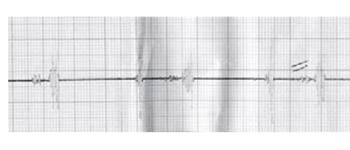Heart Murmur and Anaemia in the Pediatric Population
DOI:
https://doi.org/10.17305/bjbms.2005.3269Keywords:
innocent murmur, anaemiaAbstract
Innocent heart murmurs are hearth murmurs that occur in patients with a normal heart structure. They do not represent a disease of the heartand vascular system, and should not be treated as such. Iron-deficiency anaemia often causes, along with other symptoms, systolic heart murmurs and tachycardia. It appears in children of all ages representing a most common haematological paediatric disease. To establish the influence of iron-deficiency anaemia on genesis of innocent murmurs and to compare auscultatory and phono-electrocardiographic findings in patients with anaemia and heart murmurs before and after iron therapy. The study includes 120 patients with innocent heart murmurs that have been auscultated at cardio-rheumatic outpatient department of Pediatric Clinic of the Clinical Center of the University of Sarajevo, during the period from 01/01/2004 to 31/12/2004. Further diagnostic procedure, i.e. laboratory tests, diagnosed iron-deficiency anaemia in 30/120 patients. These patients have been followed in this study. 22/30 patients had systolic murmur I/II intensity of Levin scale; 8/30 patients had II/VI systolic murmurs of intensity by Levin. The highest number of examinees had 0-1 years of age, and in this group the number of boys was higher than the number of girls (M: F = 12:4). During the auscultatory and phono-ECG examinations of murmurs, 6 patients had haemoglobin values less than 95 g/l, which corresponds to an average and severe type of anaemia. 24 patients had haemoglobin values between 95 and 110 g/l, which corresponds to benign type of anaemia. The most numerous were patients aged between 0 - 1 year (3 patients with hemoglobin value Hb < 95 g/l, 13 patients with hemoglobin value Hb 95-110 g/l). All patients were treated with iron medicaments. After three months, clinical and laboratory re-evaluation was performed and it has demonstrated that after iron therapy 24 patients had level of a haemoglobin Hb >110 g/l and 6 patients had haemoglobin levels between 95 and 110 g/l. By auscultatory and phono-ECG examinations, murmurs of a level of intensity I/II was registered in only one child, while in the other 29 patients there were not any registered heart murmurs. Diagnosis of anaemia in the paediatric population group delays definitive diagnosis of heart murmurs. Innocent murmurs in children with sideropenic anaemia occur as its consequence. After adequately conducted iron therapy, i.e. cured anaemia, heart murmurs were not auscultated.
Downloads














